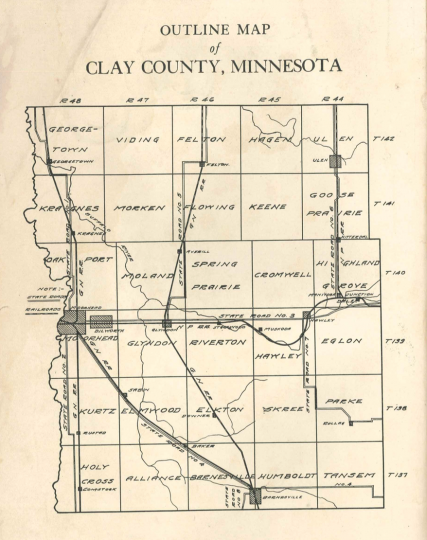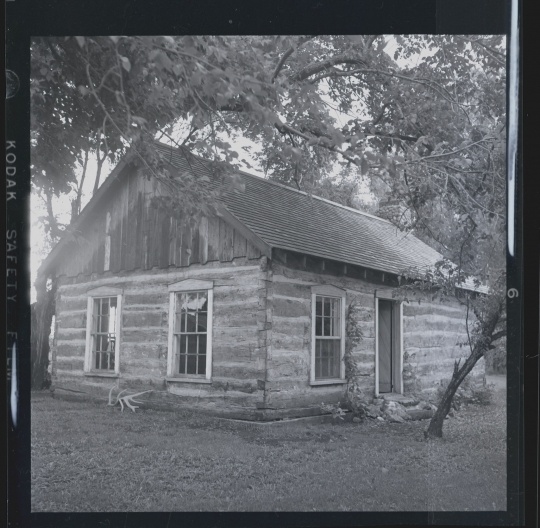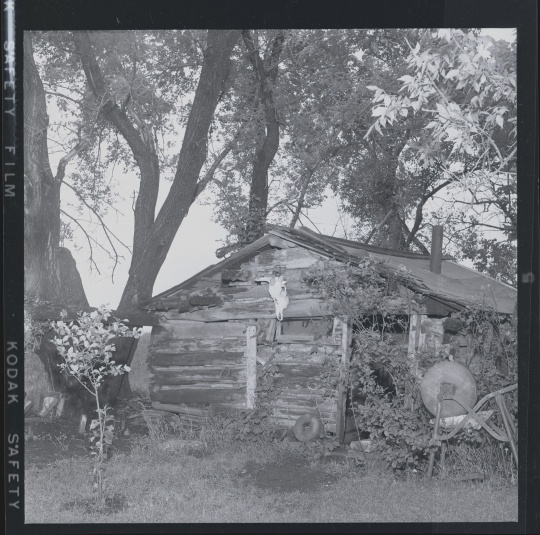The Norwegians who made their homes along the Buffalo River in 1870 were among the first European settler-colonists to live in Clay County. The timing of their arrival, before the land had been surveyed, helped to draw other immigrants to the area.
In 1861 a group of Norwegians traveled to the United States and came to Houston County, Minnesota. Many Europeans had already immigrated to this area of the state, which made land difficult and costly to attain. After a few years in the area, many of the Norwegians wished to find a less populous place to live.
In 1869 Paul Hjelm-Hansen wrote a series of articles promoting immigration to the Red River Valley that was published in a Norwegian American paper based in Wisconsin. These articles sparked the interest of a few of the Norwegians in Houston County, and soon they made plans to move to the Red River Valley.
By May of 1870 three families and four single men left Houston County in a train of prairie schooners. They planned to travel as far as Otter Tail County, Minnesota, or Grand Forks, North Dakota. Olav Thortvedt was the leader of this group.
At this time, few European immigrants lived in the Red River Valley. Georgetown, a Hudson Bay Company trading post, was the only non-Native/Métis enclave in Clay County. Europeans who arrived in the 1850s had abandoned the area after the US–Dakota War of 1862. Only a few remained, including R. M. Probstfield, who ran the post at Georgetown. By some accounts, Probstfield was the only settler-colonist left in Clay County after the war.
Thortvedt and his group made their way northwest across Minnesota, traveling on old stagecoach roads and the trails of Red River oxcarts. By July of 1871, after a four-hundred-mile journey, Thortvedt’s group reached Georgetown. There, they decided to cross into Dakota Territory to look for an area to live permanently. The group wanted to be near a river where both water and fuel were easily attainable. They deemed the Red River Valley too low-lying for farming, however. Disappointed, they stayed a few days in Dakota Territory and considered returning to Houston County.
When crossing back into Minnesota, the group met Probstfield near Georgetown. After hearing the group’s complaints about the Red River Valley, Probstfield told them about the nearby Buffalo River area, which had not been surveyed yet. He then offered to show Thortvedt the location. The land around the Buffalo River was higher than the land around the Red River, and the group decided to establish farms there.
The group began work at once to create a colony. The families were allowed to pick their land first, and the single men chose their plots afterwards. Thortvedt chose to homestead in the center of the community since he was the group’s leader but also because he owned the only grindstone. The entire colony used this stone almost daily to sharpen their plows, axes, and other tools, so they all wanted to be within reasonable distance of the essential item.
Life on the prairie was difficult, and the colonists often wondered if they had made the right decision to live in the area permanently. The Thortvedts decided that they would stay for ten years, and if no other immigrants had come to the area by that time, the family would move again.
Not long after the Thortvedts’ pact, a railroad surveyor approached the colony and announced that the Northern Pacific Railroad was planning a line just a few miles from their location. The colonists were overjoyed, and soon, more families and neighbors from Houston County relocated to the Buffalo River.
After the railway was complete in 1872, immigrants flooded the area, creating booming communities across the prairie. Supplies became easier for colonists to attain, and the Buffalo River colony continued to grow and thrive.







